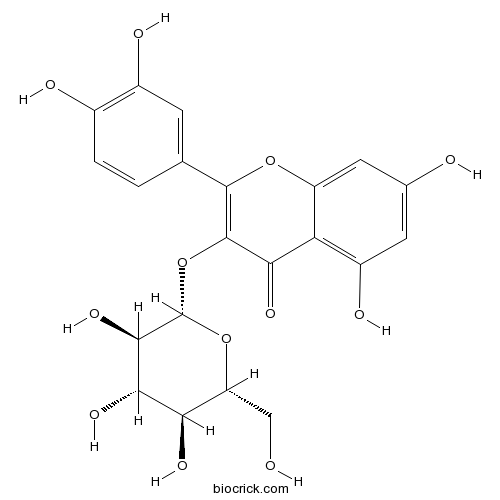Adonis amurensis
Adonis amurensis
1. The products in our compound library are selected from thousands of unique natural products; 2. It has the characteristics of diverse structure, diverse sources and wide coverage of activities; 3. Provide information on the activity of products from major journals, patents and research reports around the world, providing theoretical direction and research basis for further research and screening; 4. Free combination according to the type, source, target and disease of natural product; 5. The compound powder is placed in a covered tube and then discharged into a 10 x 10 cryostat; 6. Transport in ice pack or dry ice pack. Please store it at -20 °C as soon as possible after receiving the product, and use it as soon as possible after opening.
Natural products/compounds from Adonis amurensis
- Cat.No. Product Name CAS Number COA
-
BCN4984
Orientin28608-75-5
Instructions

-
BCN5569
Isoquercitrin482-35-9
Instructions

-
BCN5658
Apigenin520-36-5
Instructions

The AaDREB1 Transcription Factor from the Cold-Tolerant Plant Adonis amurensis Enhances Abiotic Stress Tolerance in Transgenic Plant.[Pubmed: 27110776]
Dehydration-responsive element binding (DREB) transcription factors (TFs) play important roles in the regulation of plant resistance to environmental stresses and can specifically bind to dehydration-responsive element/C-repeat element (DRE/CRT) proteins (G/ACCGAC) and activate expression of many stress-inducible genes. Here, we cloned and characterized a novel gene (AaDREB1) encoding the DREB1 transcription factor from the cold-tolerant plant Adonis amurensis. Quantitative real-time (qRT)-PCR results indicated that AaDREB1 expression was induced by salt, drought, cold stress, and abscisic acid application. A yeast one-hybrid assay demonstrated that AaDREB1 encodes a transcription activator and specifically binds to DRE/CRT. Furthermore, transgenic Arabidopsis and rice harboring AaDREB1 showed enhanced tolerance to salt, drought, and low temperature. These results indicated that AaDREB1 might be useful in genetic engineering to improve plant stress tolerance.
Determination of Other Related Carotenoids Substances in Astaxanthin Crystals Extracted from Adonis amurensis.[Pubmed: 26062642]
Astaxanthin is a kind of important carotenoids with powerful antioxidation capacity and other health functions. Extracting from Adonis amurensis is a promising way to obtain natural astaxanthin. However, how to ensure the high purity and to investigate related substances in astaxanthin crystals are necessary issues. In this study, to identify possible impurities, astaxanthin crystal was first extracted from Adonis amurensis, then purified by saponification and separation. The concentration of total carotenoids in purified astaxanthin crystals was as high as 97% by weight when analyzed by UV-visible absorption spectra. After identified with TLC, HPLC and MS, besides free astaxanthin as main ingredient in the crystals, there existed four other unknown related substances, which were further investigated by HPLC/ESI/MS with the positive ion mode combining with other auxiliary reference data obtained in stress tests, at last it was confirmed that four related carotenoids substances were three structural isomers of semi-astacene and adonirubin.
Amurensiosides L-P, five new cardenolide glycosides from the roots of Adonis amurensis.[Pubmed: 25920213]
Five new cardenolide glycosides, amurensiosides L-P (1-5), were isolated from the roots of Adonis amurensis. Their structures were determined based on extensive spectroscopic analysis, including two-dimensional (2D) NMR data, and on the results of hydrolytic cleavage. Compounds 1-5 were evaluated for their cytotoxic activities against HL-60 human promyelocytic leukemia and HSC-2 human oral squamous cell carcinoma cell lines.
Amurensiosides A-K, 11 new pregnane glycosides from the roots of Adonis amurensis.[Pubmed: 19883671]
Five new pregnane tetraglycosides, amurensiosides A-E (1-5), two new pregnane hexaglycosides, amurensiosides F (6) and I (9), two new 18-norpregnane hexaglycosides, amurensiosides G (7) and H (8), and two new pregnane octaglycosides, amurensiosides J (10) and K (11), were isolated from the MeOH extract of the roots of Adonis amurensis. The structures of the new compounds were determined on the basis of extensive spectroscopic analysis, including two-dimensional (2D) NMR data, and the results of hydrolytic cleavage. The isolated compounds were evaluated for their cytotoxic activity against HSC-2 human oral squamous cell carcinoma cells.
Inhibitory effect of Adonis amurensis components on tube-like formation of human umbilical venous cells.[Pubmed: 12749003]
Antiangiogenic activity-guided fractionation and isolation carried out on the methanol extract of Adonis amurensis led to the identification of three compounds, namely cymarin, cymarol, and cymarilic acid. Amongst the three compounds, cymarilic acid was isolated from this plant for the first time. This compound showed no significant cytotoxicity against tumor cell lines but was found to be strongly inhibitory toward tube formation induced by human umbilical venous endothelial (HUVE) cells. Cymarin and cymarol exhibited potent cytotoxicity against a human solid tumor cell line A549 (human lung carcinoma), while being inactive on murine leukemic cells (L1210).


